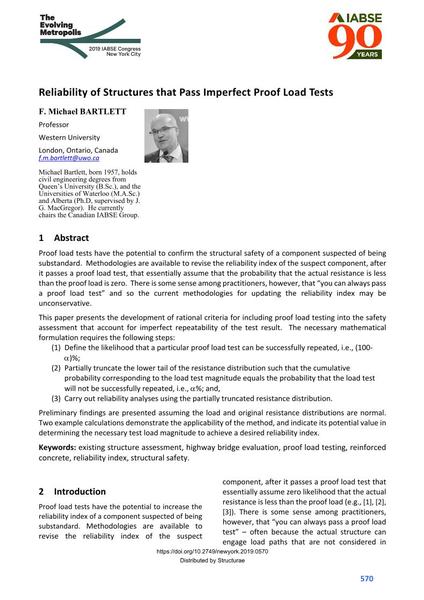Reliability of Structures that Pass Imperfect Proof Load Tests

|
|
|||||||||||
Bibliographic Details
| Author(s): |
F. Michael Bartlett
(Western University)
|
||||
|---|---|---|---|---|---|
| Medium: | conference paper | ||||
| Language(s): | English | ||||
| Conference: | IABSE Congress: The Evolving Metropolis, New York, NY, USA, 4-6 September 2019 | ||||
| Published in: | The Evolving Metropolis | ||||
|
|||||
| Page(s): | 570-575 | ||||
| Total no. of pages: | 6 | ||||
| DOI: | 10.2749/newyork.2019.0570 | ||||
| Abstract: |
Proof load tests have the potential to confirm the structural safety of a component suspected of being substandard. Methodologies are available to revise the reliability index of the suspect component, after it passes a proof load test, that essentially assume that the probability that the actual resistance is less than the proof load is zero. There is some sense among practitioners, however, that “you can always pass a proof load test” and so the current methodologies for updating the reliability index may be unconservative. This paper presents the development of rational criteria for including proof load testing into the safety assessment that account for imperfect repeatability of the test result. The necessary mathematical formulation requires the following steps:
Preliminary findings are presented assuming the load and original resistance distributions are normal. Two example calculations demonstrate the applicability of the method, and indicate ist potential value in determining the necessary test load magnitude to achieve a desired reliability index. |
||||
| Keywords: |
structural safety reinforced concrete reliability index existing structure assessment highway bridge evaluation proof load testing
|
||||
